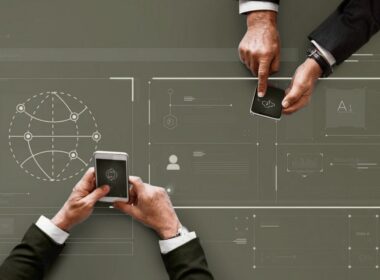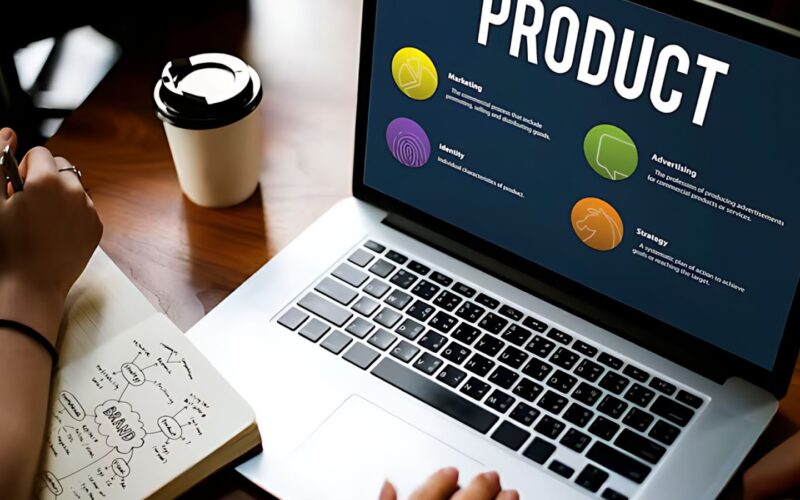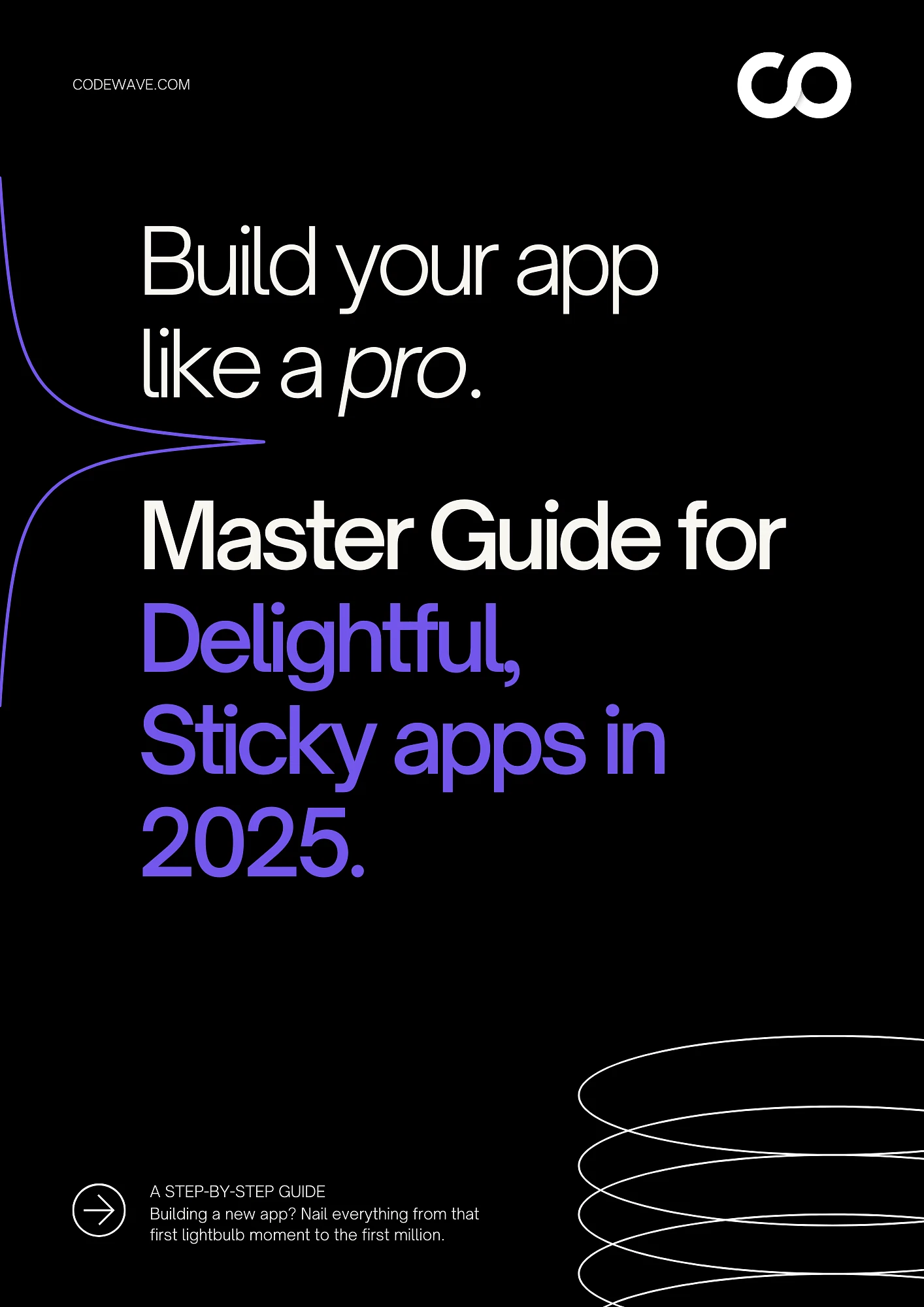Have you launched a product feature only to discover users don’t actually need it? You’re not alone. Many business leaders struggle with building solutions that truly connect with their customers and drive meaningful results. In fact, according to a Gartner report, more than half of digital initiatives worldwide fall short of their business goals, with only 48% meeting expectations.
Design thinking offers a proven framework that changes how companies approach innovation. Instead of guessing what users want, this human-centered methodology provides systematic ways to understand real problems and create solutions people actually use.
In this guide, we break down the top 10 benefits of design thinking for your business. Let’s explore how design thinking can turn your next product or service into a strategic advantage.
Key Takeaways:
- Design thinking validates ideas early, preventing costly mistakes and failed product launches.
- The framework ensures you build products that solve real customer problems and drive adoption.
- Teams work more effectively when united around shared user insights and clear problem definitions.
- Early problem identification and testing accelerate time-to-market for new solutions.
- The framework delivers noteworthy business benefits, including improved user satisfaction and reduced development costs.
What is Design Thinking?
Design thinking is a human-centered problem-solving approach that helps you understand what users actually need before building solutions. The methodology shifts focus from internal assumptions to external user realities through systematic research and validation.
The framework consists of different phases that guide teams from problem identification to tested solutions. You start by empathizing with users to understand their real challenges, then define specific problems worth solving. Next, you ideate multiple solution approaches, build quick prototypes, and test concepts with actual users.
Companies like Apple, IBM, and Netflix use design thinking to create products that generate significant revenue because they solve genuine user problems. The approach works across industries and project types, from mobile apps to internal business processes.
Knowing the concept is just the beginning. Let’s look at how this methodology actually works in practice and why each phase matters for your business results.
How Does Design Thinking Work?
Design thinking follows a structured but flexible process that keeps users at the center of every decision.
The process begins with deep user research through interviews, observations, and data analysis. You gather insights about how people actually work, what frustrates them, and what they’re trying to accomplish. This foundation prevents building solutions based on internal assumptions.
Here’s how the five phases create better outcomes:
- Empathize: Understand users through research, interviews, and direct observation of their real-world behaviors.
- Define: Synthesize research findings into clear problem statements that focus your solution efforts.
- Ideate: Generate multiple solution concepts without immediate judgment or constraints on feasibility.
- Prototype: Create quick, testable versions of promising ideas to validate core assumptions.
- Test: Gather user feedback on prototypes to refine solutions before major development investments.
The process is iterative, meaning you can cycle back through phases as you learn more about user needs and solution effectiveness. This flexibility helps you adapt to new insights rather than following rigid development plans.
Now that you understand how the process works, you’re probably wondering what specific advantages it delivers. So, let’s take a detailed look at the business benefits that make design thinking worth considering.
The Top 10 Benefits of Design Thinking
Design thinking delivers effective advantages that improve both immediate project outcomes and long-term business capabilities. These benefits compound as organizations develop user-centered thinking and systematic innovation processes.
1. Reduces Product Development Risk
Design thinking minimizes the chance of building products nobody wants by validating ideas with real users early in the development process. Instead of investing months in untested concepts, you gather feedback when changes are still quick and inexpensive to make.
The approach identifies potential problems during research and prototyping phases rather than after launch. You also validate market demand before committing significant resources to development.
Example: If you’re building a mobile banking app and assume customers want the fastest possible check deposits, user interviews might reveal they actually care more about security confirmation than speed. This insight would save you from building the wrong features and help you focus on trust-building elements like detailed transaction notifications.
Tips to apply:
- Start with user interviews: Talk to five existing customers about their current process and ask them to show you where they struggle or feel confused.
- Test concepts early: Create simple sketches or wireframes of your idea and show them to users before writing any code or building anything complex.
- Validate the problem first: Confirm that users actually experience the problem you think you’re solving by asking them to describe their biggest frustrations in their own words.
2. Improves User Adoption and Satisfaction
Products built with design thinking principles consistently achieve higher user engagement because they address real problems in ways people find intuitive and valuable. The framework ensures solutions fit naturally into user workflows and contexts.
The user-centered approach also reduces support costs because well-designed solutions cause fewer confusion and usability problems that generate customer service requests.
Example: If you’re creating an internal project management tool and assume teams want more features, user observation might show they’re actually overwhelmed by too many options. You’d discover they need simpler workflows and clearer navigation, leading to a more well-structured design that people actually use daily instead of avoiding.
Tips to apply:
- Watch users in action: Observe how people currently complete tasks without your product and note where they slow down or make mistakes.
- Test with real workflows: Have users try your prototype while doing their actual work, not in a controlled testing environment with fake tasks.
- Measure engagement early: Track how often people return to use your solution after their first experience, not just initial sign-ups or downloads.
3. Accelerates Time-to-Market
Design thinking speeds up development by providing clear direction from the start. When you understand user needs and validate concepts early, development proceeds more smoothly without major direction changes or feature debates.
The framework front-loads research and validation, which creates faster progress later. Teams spend less time arguing about features because user research provides objective guidance about what matters most to customers.
Example: If you’re building an e-commerce checkout process and your team debates whether to include guest checkout or require account creation, testing both options with real shoppers for two days would give you clear data about which approach reduces cart abandonment, eliminating weeks of internal discussion.
How to Apply:
- Set research deadlines: Spend exactly one week gathering user feedback before any development starts, then use those insights to guide all feature decisions.
- Create decision criteria: List the top three user needs discovered through research and use them to evaluate every feature request or design choice.
- Build agreement upfront: Have all team members review user research findings together so everyone works from the same customer understanding.
Want to turn your innovation process from guesswork into systematic results? Codewave’s design thinking process helps companies implement these principles effectively and achieve measurable improvements in product success and user satisfaction.
4. Enhances Cross-Functional Collaboration
Design thinking breaks down silos between departments by creating shared understanding around user needs and business problems. When engineering, marketing, and design teams all work from the same user insights, they align naturally around common goals.
The framework provides structured collaboration tools like user journey maps and problem statements that help different disciplines communicate effectively. Everyone shares the same foundation of customer knowledge rather than working from separate assumptions.
Example: If your marketing team wants to highlight advanced features while your engineering team worries about complexity, user interviews showing that customers value simplicity over sophistication would help both teams agree on a streamlined approach that satisfies user needs and technical constraints.
Tips to apply:
- Share user stories across teams: Have marketing, engineering, and design attend the same user interview sessions so everyone hears customer feedback directly.
- Create visual journey maps: Draw out the customer experience from start to finish and post it where all team members can reference it during decisions.
- Use user language: Refer to specific user quotes or scenarios when discussing features instead of using departmental jargon or assumptions.
5. Drives Innovation Through Systematic Creativity
Design thinking structures creative exploration without limiting it. The framework provides clear phases for generating ideas and testing concepts, helping teams discover breakthrough solutions systematically rather than randomly.
During ideation sessions, teams explore multiple solution approaches before committing to one direction. This broad thinking often reveals unexpected opportunities that linear problem-solving would miss.
Example: If you start a project to improve your customer support chatbot, design thinking research might reveal that customers don’t actually want to chat with bots at all. They want faster access to human agents. This insight could lead you to create a smart routing system instead of a better chatbot, solving the real problem more effectively.
Tips to apply:
- Generate many options first: Create at least ten different solution ideas before evaluating any of them, even if some seem unrealistic at first.
- Question the original brief: Ask users if the problem you’re trying to solve is actually their biggest concern or if something else bothers them more.
- Combine unexpected ideas: Look for ways to merge solutions from different industries or contexts that users mentioned during research.
6. Creates Competitive Advantage Through User Insights
Companies using design thinking develop deep customer understanding that competitors find difficult to replicate. While features and technology can be copied, systematic user insights and innovation processes create lasting differentiation.
The approach reveals opportunities that aren’t obvious from market research or analytics alone. You discover unmet needs, workflow inefficiencies, and emotional drivers that inform better strategic decisions.
Example: If you’re competing in the meal delivery space and most companies focus on speed, user research might uncover that busy parents actually care more about predictable timing than absolute speed. This insight could lead you to offer precise delivery windows rather than faster delivery, creating a unique market position.
Tips to apply:
- Study user emotions: Ask customers how they feel before, during, and after using your product to uncover emotional needs that competitors miss.
- Map complete workflows: Understand what users do before and after interacting with your product to find opportunities outside your current scope.
- Track user language: Note the exact words customers use to describe their problems and use that language in your marketing and product design.
7. Builds Organizational Innovation Culture
Design thinking transforms how teams approach problems and make decisions. Organizations develop cultures of experimentation, user focus, and collaborative problem-solving that support long-term adaptability and growth.
Teams become more comfortable with uncertainty and iterative learning. Instead of needing complete certainty before acting, people learn to test assumptions quickly and adapt based on feedback.
Example: If your company culture typically requires detailed business cases before trying anything new, design thinking introduces rapid prototyping where teams can test ideas in days rather than months. This shift helps employees become more comfortable with experimentation and faster decision-making across all projects.
Tips to apply:
- Start small experiments: Encourage teams to test one assumption per week using simple prototypes or user conversations rather than waiting for perfect plans.
- Share learning openly: Create regular sessions where teams present what they learned from user feedback, including what didn’t work as expected.
- Reward curiosity: Recognize employees who ask good questions about user needs, not just those who deliver predetermined solutions.
8. Optimizes Resource Allocation
The framework helps you invest time and money in the right areas by validating assumptions before major commitments. Early testing prevents building elaborate solutions to problems that don’t actually exist or matter to users.
Design thinking also reveals which features and capabilities users value most, helping you prioritize development efforts effectively. You can focus resources on high-impact areas rather than trying to build everything at once.
Example: If you’re planning a major website redesign and considering new features like live chat, video tutorials, and advanced search, user testing might show that people just want faster page loading and clearer navigation. You’d save money by improving performance instead of adding complexity.
Tips to apply:
- Test before building: Spend one day creating mockups of three different approaches and get user feedback before choosing which direction to develop fully.
- Rank features by user value: Ask customers to prioritize their most important needs and build only the top three items first.
- Set validation budgets: Allocate a specific amount for user research and testing before any major development investment, treating it as insurance against building wrong solutions.
9. Improves Decision-Making Quality
Design thinking provides objective criteria for making product and strategy decisions based on user needs rather than internal preferences or assumptions. Teams can reference research findings and test results when evaluating different options.
The approach also reveals trade-offs and consequences that aren’t immediately obvious. User feedback on prototypes often highlights unexpected impacts of design decisions on workflow or satisfaction.
Example: If your team debates whether to add a new dashboard feature, user testing could show that while people like the feature itself, it makes the interface feel cluttered and actually reduces their overall productivity. This data helps you make informed decisions about whether the trade-off is worth it.
Tips to apply:
- Document user preferences: Keep a simple record of what users said they wanted most during interviews and refer to it when making feature choices.
- Test competing options: When facing difficult decisions, create quick prototypes of both approaches and see which one users prefer in practice.
- Measure actual behavior: Track what users do with your product, not just what they say they want, to make decisions based on real usage patterns.
Making product decisions based on opinions instead of evidence? Your users have the answers you need, but only if you ask the right questions. Codewave’s UX & UI Design process gives you the clarity to make confident choices. Schedule a consultation today.
10. Enables Scalable Problem-Solving
Once teams learn design thinking principles, they can apply the framework to different types of challenges beyond product development. The methodology works for service design, process improvement, and strategic planning.
The structured approach becomes a shared language and toolkit that organizations can use consistently across projects and departments. Teams develop systematic ways to approach complex problems rather than starting from scratch each time.
Example: If your HR team struggles with employee onboarding, they could use design thinking to interview new hires about their experience, identify pain points, prototype better processes, and test improvements. The same approach that works for customer-facing products also improves internal operations.
Tips to apply:
- Apply to internal processes: Use the five-phase design thinking process to improve any workflow that affects multiple people or departments.
- Train multiple teams: Teach the basic framework to different groups so they can tackle problems in their areas using the same systematic approach.
- Create reusable templates: Develop simple interview guides and prototype formats that any team can use when facing user-centered challenges.
Implement Design Thinking Successfully with Codewave
Many organizations struggle to implement design thinking consistently or measure its impact on business outcomes. Without proper guidance and systematic approaches, teams often revert to familiar methods that rely on assumptions rather than user insights.
Codewave specializes in helping companies build user-centered innovation capabilities through proven design thinking methodologies. Our approach combines comprehensive user research with rapid prototyping and systematic validation to create products that users adopt and businesses depend on.
Our design thinking services deliver measurable business value through structured implementation:
- User research and insights: We conduct comprehensive interviews, behavioral observations, and market analysis to understand your customers’ real needs, motivations, and contexts.
- Problem definition workshops: Our facilitated sessions help you synthesize research findings into clear, actionable problem statements that guide strategic decisions and development priorities.
- Rapid prototyping and validation: We create testable prototypes quickly and gather user feedback to validate core assumptions before major development investments.
- Cross-functional team alignment: Our collaborative workshops unite engineering, design, and business teams around shared user insights and systematic problem-solving approaches.
- Implementation roadmaps: We provide concrete action plans for applying design thinking principles throughout your organization and measuring business impact over time.
Explore our portfolio to see how we’ve applied design thinking across different industries and business challenges.
Ready to move beyond guesswork and build products users actually want? Contact us today to see how design thinking can work for your business.
FAQs
1. How long does it take to see results from design thinking?
Most organizations notice improved team alignment and clearer user insights within the first month of implementation. Measurable business outcomes like increased user adoption and reduced development costs typically appear within three to six months of consistent application.
2. What’s the main difference between design thinking and traditional development approaches?
Traditional development often starts with solutions and internal assumptions about user needs. Design thinking begins with systematic user research and problem validation, ensuring you build the right solutions rather than building solutions right.
3. How do you measure the business impact of design thinking initiatives?
Key success metrics include reduced development time and costs, improved user satisfaction scores, higher adoption rates, decreased support requests, and increased customer retention. These outcomes demonstrate tangible return on investment from user-centered approaches.
4. Do technical teams need special training to use design thinking methods?
Basic design thinking principles can be learned quickly through workshops and guided practice sessions. Technical teams benefit most from hands-on experience with user research, prototype testing, and collaborative problem-solving rather than theoretical training alone.
5. What types of business problems work best with design thinking approaches?
Design thinking excels with complex, user-centered challenges where the right solution isn’t immediately obvious. This includes product development, service design, process improvement, and strategic planning, where understanding user needs drives better outcomes.
Codewave is a UX first design thinking & digital transformation services company, designing & engineering innovative mobile apps, cloud, & edge solutions.







